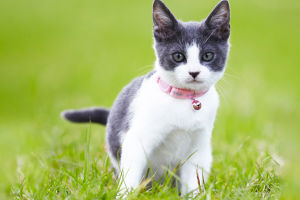On land, many animals move by jumping, such as rabbits, kangaroos, and sparrows. But did you know that some rabbits walk on their front feet with their back legs in the air?
This rare breed, known as the sauteur d’Alfort, has intrigued scientists and animal enthusiasts alike. Recently, researchers analyzed the genome of these unique rabbits and found that their unusual gait is due to a specific mutation in their RORB gene.
From the perspective of molecular genetics, the study of jumping as a mode of movement is still under exploration. However, when we see a sauteur d’Alfort rabbit lifting its hind legs and walking quickly on its front paws, we should not be amused or think it is performing a circus trick. This peculiar movement is a result of a genetic anomaly.
When moving slowly, sauteur d’Alfort rabbits can walk normally by alternating their front and back legs. However, when they attempt to move quickly, they cannot jump up naturally like other rabbits.
New research led by Miguel Carneiro, a molecular geneticist at the University of Porto in Portugal, and Leif Andersson’s team at Uppsala University in Sweden, has shown that their ability to hop is due to a defect in the RORB gene.
To uncover the genetic basis of this behaviour, researchers conducted breeding experiments. They mated male sauteur d’Alfort rabbits that could not run or jump with female rabbits of other breeds.
By comparing the genomes and jumping abilities of the offspring, they identified the cause of the abnormal development: a specific mutation in the RORB gene, which is widely present in the nervous system of rabbits. The mutation causes a sharp decrease in the number of spinal neurons that produce RORB.
Spinal neurons are crucial for coordinating the left and right sides of the body and maintaining normal gait. When the number of these neurons decreases, sauteur d’Alfort rabbits may lack the ability to coordinate their hind limbs, leading to the behaviour of lifting their hind legs but being unable to jump.
This study not only explains the cause of the abnormal gait in sauteur d’Alfort rabbits but also contributes to our understanding of motor function in humans and other animals.
Previous studies have shown that mice with RORB gene mutations also waddle like ducks when walking, indicating that the RORB gene plays a significant role in the normal spinal development and motor balance of quadrupeds.
When we run and jump, we often overlook the complexity of these actions. Gait involves a precise coordination of limbs that must move at the right time. Muscles must contract, bend, straighten, and lift in a well-timed sequence. When the brain senses danger or obstacles, the body must immediately follow instructions to change movements, such as shifting from walking to running.
The unique gait of the sauteur d’Alfort rabbit provides valuable insights into the mechanisms of movement. This research highlights the role of spinal neurons and the RORB gene in coordinating complex motor functions. The sauteur d’Alfort rabbit's unique mode of locomotion has provided researchers with a fascinating glimpse into the genetic and neurological basis of movement.
The identification of the RORB gene mutation not only explains the rabbit's unusual gait but also enhances our broader understanding of motor coordination and balance.
As scientists delve deeper into the RORB gene and its functions in the nervous system, we can expect to uncover more about the mysteries of movement coordination and gait control.


